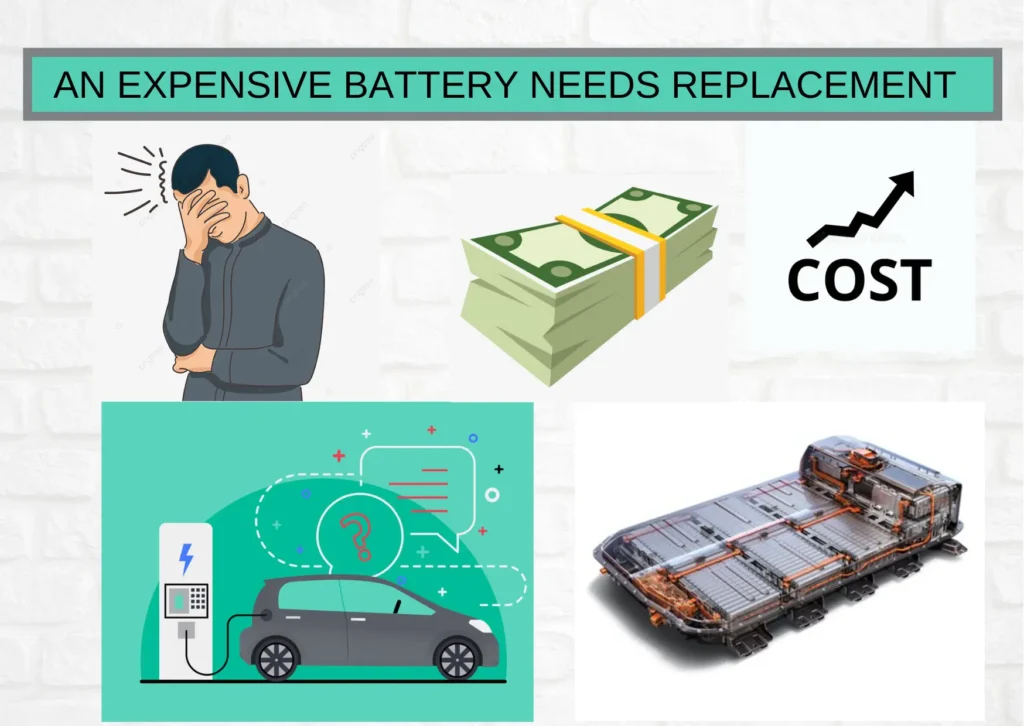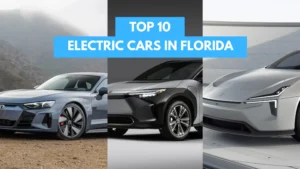The wise philosopher Socrates with his timeless wisdom said: “Happiness lies not in chasing more but in finding joy in less.” Fast forward to today, and those words hit the electric vehicle (EV) scene with a comedic punchline.
In a world thirsty for sustainability, EVs have taken the spotlight, stealing the show. Picture this: Bloomberg New Energy Finance reports that the global EV market raced ahead by a staggering 40% in 2022, with electric cars zooming past, claiming a juicy 10% slice of all new vehicle sales. Talk about an electrifying surge, despite the hurdles they face! It’s like a wild ride where the twists and turns make the victory even sweeter.
But hey, let’s not pretend EVs had an easy road to stardom. Just like Socrates said, striving for more – in this case, sustainability and innovation – means we gotta buckle up for the challenges. It’s time to shine a light on those hurdles, not to slam the brakes on EV growth, but to supercharge them for a future where they conquer the highways.
List of Problems with Electric Vehicles:
1. Charging Time:

Charging time of electric vehicles is decreasing gradually every year but it still hasn’t reached a point where it can comfortably compete with ICE refueling time. On an average an EV spends 85% of its lifetime being plugged in and charging and our aim is to reduce this percentage while maintaining its usage.
Talking about fast charging we did achieve some great numbers but it’s not sustainable for the battery health, regularly fast charging the battery can drastically reduce battery life. However, various battery technologies are currently in the research phase, and in the future we might see some really healthy batteries with much less charging time.
2. Convenience of Charging:

People not only want more options to charge but also the convenience of charging their vehicles. It’s true EVs can never be as quick and convenient to refuel as an ICE vehicle but we can reduce the horror that comes with charging an EV.
Now, making charging more convenient doesn’t necessarily mean fast charging because it can cost significantly high, and frequently fast charging can dampen the battery health. What we can do is strategize the charging points so that one can charge it while it’s sitting ideally like a parking cum charging zone.
3. EV cost and battery cost:

However, electric cars have very low or negligible costs for driving and maintaining when compared to the ICE car but the upfront cost of electric vehicles is usually very high and sometimes almost double than its ICE equivalent. Most importantly it is the battery that adds up the most into the equation.
Battery contributes 1/3 or sometimes half the cost of the electric vehicle. This may develop as a serious concern in the future as the li-on scarcity grows, ‘cuz after all a battery is nothing but a mixture of different natural components.
So we need to prioritize R&D of more affordable, environment-friendly lithium alternatives.
Also Read: Top 10 EV battery Startups in 2023
4. Range Anxiety (it still exists):

In 2023 the highest Range EV is coming from an electric car-making startup Lucid with 516 miles in a 100% charged battery. To be honest it’s a lot but is it practical? Let’s look at the range of the highest-selling electric cars:
EV | Range |
| Model Y | 330 miles |
| Model 3 | 333 miles |
| Ford Mustang Mach E | 312 miles |
| Model S | 405 miles |
| Chev. Bolt EV | 259 miles |
Did you notice the difference? Now, 400 miles might sound like a lot but we use our vehicle for up-down trips and not one-way. So in such a case, we are left with merely 200 miles to one way which creates range anxiety.
5. Blood Batteries/Use of rare Earth Materials:
The use of rare earth materials in electric vehicles poses challenges due to limited availability and environmental implications. These materials are vital for producing permanent magnets in electric motors. However, their concentration in a few countries raises concerns about supply chain security and geopolitical dependencies. Disruptions in rare earth production can impact global EV manufacturing. To ensure sustainable EV industry growth, diversifying rare earth sources and developing alternative technologies are pursued.
Furthermore, rare earth extraction and refining have environmental consequences, including waste generation and pollutant release. The refining process involves strong acids and produces toxic byproducts. Effective management and mitigation of these impacts are crucial for minimizing the ecological footprint of electric vehicles. Research focuses on environmentally friendly sourcing and processing methods for rare earth materials, as well as exploring alternative materials with similar magnetic properties but fewer environmental.
6. Performance in Extreme Weather:

ICE vehicles bring a lot of limitations in extreme weather conditions, but it isn’t that the EV’s are any different. It’s true that EV’s don’t have much trouble with extream condtions than that of ICE vehicles but aren’t flaw free.
In extreme weather conditions EV charges slowly, range reduced to very high extent, the tyre pressure gets low which adds up to the damping range of the EV, and in cool weather conditions the EV starts consuming more energy. The efficiency of an EV is reduced up to 20% in extreme weather conditions.
7. Power Grid Load:

The increasing use of electric vehicles (EVs) poses a significant challenge to the power grid’s capacity. As more people switch from conventional cars to EVs, the demand for electricity rises, potentially straining the grid infrastructure. This could lead to overloads during peak charging times and result in power outages if not properly managed.
To support the widespread adoption of EVs, improvements to the power grid are necessary. Solutions may involve implementing smart charging systems to distribute power demand more efficiently or upgrading the grid infrastructure itself. Additionally, integrating renewable energy and advanced storage technologies can play a crucial role in managing the growing energy demand while maintaining a sustainable and reliable power supply.
8. Charging Infrastructure:

Tesla is taking over this industry too. Despite having industry-standard connectors like CCS, CHAdeMO, etc. Tesla is making everyone adopt “Tesla superchargers”. Now this might cause problems in the future because power concentration has never resulted so well in history.
Also, the number of EV charging stations isn’t sufficient enough. The quantity of charging stations is increasing linearly YoY but news like charging stations being hacked, power out, EVs ideally parked on the charging point, etc. is what worries me the most. While increasing charging points we also need to focus on improving the quality of charging stations.
9. Battery Disposal:

Disposing of an EV battery is expensive. Now we know that EV batteries stay relevant even after they are no longer useful for EVs but eventually, they’ll have to go. When the lithium battery goes fully out of service we can’t just throw it away like a banana peel because if we did, it can be harmful ecologically or can even be dangerous for human life. The thrown-away batteries can emit harmful fumes or catch fire without even a single warning.
So in the coming years, when the life of these batteries will come to an absolute end their disposal will be something to worry about. Hopefully, by then we’ll be technologically advanced enough to solve this issue.
10. Wear and tear of the roads:
Electric vehicles are heavier than the rest of the vehicles running on the road which makes EVs cause more noise while they are running and push with higher force on the road than the rest of the vehicles being an EV owner you’ll be relatively more responsible for the wear and tear of the road.
11. Load Capacity:
Ever thought, if the core principle of an EV is as simple as connecting the motor with the battery then why it’s so complicated to make an EV bus or a plane, or an electric truck?
It’s because of its energy density. The energy density of an EV goes on depleting as its battery percentage decreases and that’s why your conventional ICE-based towing truck is more welcoming to fetch a higher load when compared to an electric towing truck.
An ICE-based towing machine pulls the weight. The fuel within the vehicle gets vanish after being consumed, but just it’s the opposite in the case of electric vehicles.
When an EV is 100% charged, every single bit of the battery mass in it is useful and adds some value to the system but let’s suppose when its 50% charged, half of the battery mass in it is just sitting there as dead weight and adding nothing to the system (or) in fact it’s reducing significant efficiency of the EV. So even when your EV is 1% charged it’ll have to bear the rest of 99% of battery mass that’s of no use.
Now this dead-weight situation reduces the load capacity of an electric vehicle to a large extent.
12. Catching Fire:

Although EVs possess very few chances of catching fire when it does it gets out of hand. The EV catching fire is the other most brutal problem already knocking at our doorsteps and we still have no answers. ICE vehicle fire has become an old story and we have found the solution to the most complex problems related to such fires. But, EV fire is fairly new for us and we still have no clue how to manage it.
The main problem that haunts us with EV fire is, that it can reignite after successfully cooling it down and EV battery fire is mostly waterproof. In case of an ICE fire, one can even save the vehicles if action is taken immediately but such is not the case with electric vehicles, you’ll lose it and also make sure it doesn’t damage nearby articles.
13. Lack of Options:
This is a solvable issue but needs to be addressed because lack of options can push people away from buying an electric vehicle. Also major automobile makers don’t look interested in manufacturing electric vehicles although they all have future plans but currently are not looking to contribute much into the electric vehicle industry.
14. No mechanics:

There’s very little knowledge about electric vehicles in the market and even less among the people. If you’re riding an ICE vehicle and unfortunately your car breaks down it’s very likely that you’ll find a car repair nearby and get your car fixed but that’s not the case with electric vehicles. If your EV breaks down in the middle of your trip the only option you have is to visit your car company’s service center. Unlike ICE vehicle car mechanics are very less skilled in fixing electric cars.
We need more skilled manpower to drive this EV revolution more smoothly for EV owners.=
15. Not really green:

It’s true EV’s do not primarily emit any harmful gasses out of the exhaust, in fact it has no exhaust. But while looking for true sustainability we also need to see the carbon footprint manufacturing an EV leaving behind.
It’s surprising to see the manufacturing of an EV leaves behind nearly 8 tons of carbon footprint which is almost double than manufacturing an ICE vehicle. From battery manufacturing, crucial element extraction, to production plants it spent a humongous amount of CO2.
Ironically this issue destroys the whole reason for this EV revolution. To solve this problem with electric vehicles we need to adopt more sustainable and eco-friendly ways.
Should you buy electric vehicles in 2023?
Yes, moreover this is the best time to switch electricity. Let me explain:
The operation of the EV revolution started long ago, and by now the whole market has done, enough hits and trials, and has become pretty mature to deliver good electric vehicles. On top of that, government incentives and relaxations may come to an end soon as the adoption of electric vehicles rises to a considerable level.
Talking about the problems, every new revolution rises with some sort of disability in it, and with the right efforts and R&D, these problems will go away. So this year will be an excellent time to purchase an electric car for you.
Summarizing:
In conclusion, the challenges faced by electric vehicles (EVs) are being actively addressed as we strive for a sustainable future. Despite the hurdles, the global EV market has experienced significant growth, reflecting society’s determination to embrace greener transportation options. Issues such as range anxiety and high costs are being tackled through innovative technologies and solutions, making EVs more accessible. Improvements in charging time and infrastructure are underway to provide a more convenient and widespread charging network. Additionally, challenges related to battery disposal, extreme weather performance, load capacity, power grid capacity, and rare earth materials are being addressed through research and development. This makes 2023 an opportune time to purchase an electric car and contribute to a cleaner and brighter future.




